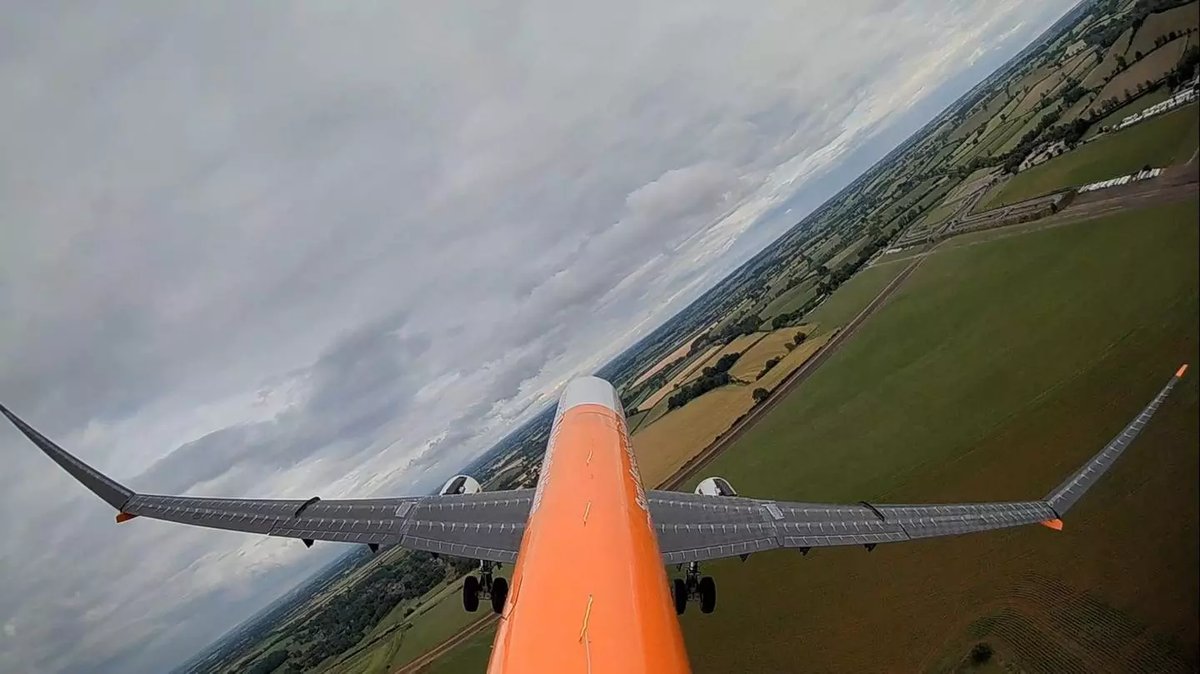How Airbus Is Reengineering the Wing—And the Future of Flight
In a bold move toward greener aviation, Airbus has introduced a groundbreaking foldable wing design for its next-generation aircraft, marking a major step in sustainable aviation. The Airbus foldable wing design, inspired by the albatross—renowned for its efficient, long wings—features ultra-long, slender wings made from advanced lightweight composite materials.
These next-gen wings are engineered to boost aerodynamic efficiency by increasing lift and reducing drag, lowering fuel usage and carbon emissions.
Why Airbus Needs Foldable Wings for Its Next-Gen Aircraft
However, there’s a practical challenge: the extended wingspan would surpass the 36-meter limit for standard airport gates. To overcome this, Airbus plans to integrate a folding mechanism that retracts the wing’s outer portion while the aircraft is on the ground, particularly during taxiing. This solution smartly combines aerodynamic performance with airport compatibility and cost efficiency.
Inside Airbus’ Wing of Tomorrow Program: Testing and Timeline
Currently, Airbus has built two out of three full-scale wing demonstrators and is conducting structural testing on one of them. The Airbus foldable wing design is a central feature of the company’s broader “Wing of Tomorrow” program, focusing on sustainable innovation and scalable manufacturing technologies.
For a deeper understanding of Boeing’s recent challenges, including CEO Kelly Ortberg’s testimony before the U.S. Senate on 737 MAX safety concerns, you can read our detailed coverage here: Boeing Faces Tough Senate Hearing Over 737 MAX Safety Issues and Past Decisions
If development stays on track, Airbus expects the technology to mature within three to four years. The new aircraft could enter production before 2030, with commercial operations projected to follow shortly after.
Beyond Wings: Airbus Explores Hydrogen and Open-Fan Engines
Furthermore, Airbus is also investigating other forward-thinking propulsion systems, including open-fan engines and hydrogen-powered technologies. Although the hydrogen solution is still in the early stages and won’t be available for the upcoming aircraft, it highlights Airbus’s long-term commitment to sustainability.
Boeing vs. Airbus: Who’s Leading the Foldable Wing Race?
Interestingly, Boeing has also taken a similar path with its 777X, which features foldable wingtips to comply with airport gate standards. However, that program has experienced several setbacks, underlining the complexities of implementing such innovations.
For a comprehensive analysis of how recent tariffs are affecting North America’s aerospace sector—and why a shift toward genuine free trade might be the solution—read our in-depth report: Tariffs Rock Aerospace: Is Total Free Trade North America’s Fix?
Read More: Airbus’ Foldable Wing Innovation in Detail
To fly higher into Airbus’s radical new wing design and what it means for the future of air travel, you can read the full article on news.com.au.
For full details, please refer to our Disclaimer page.

